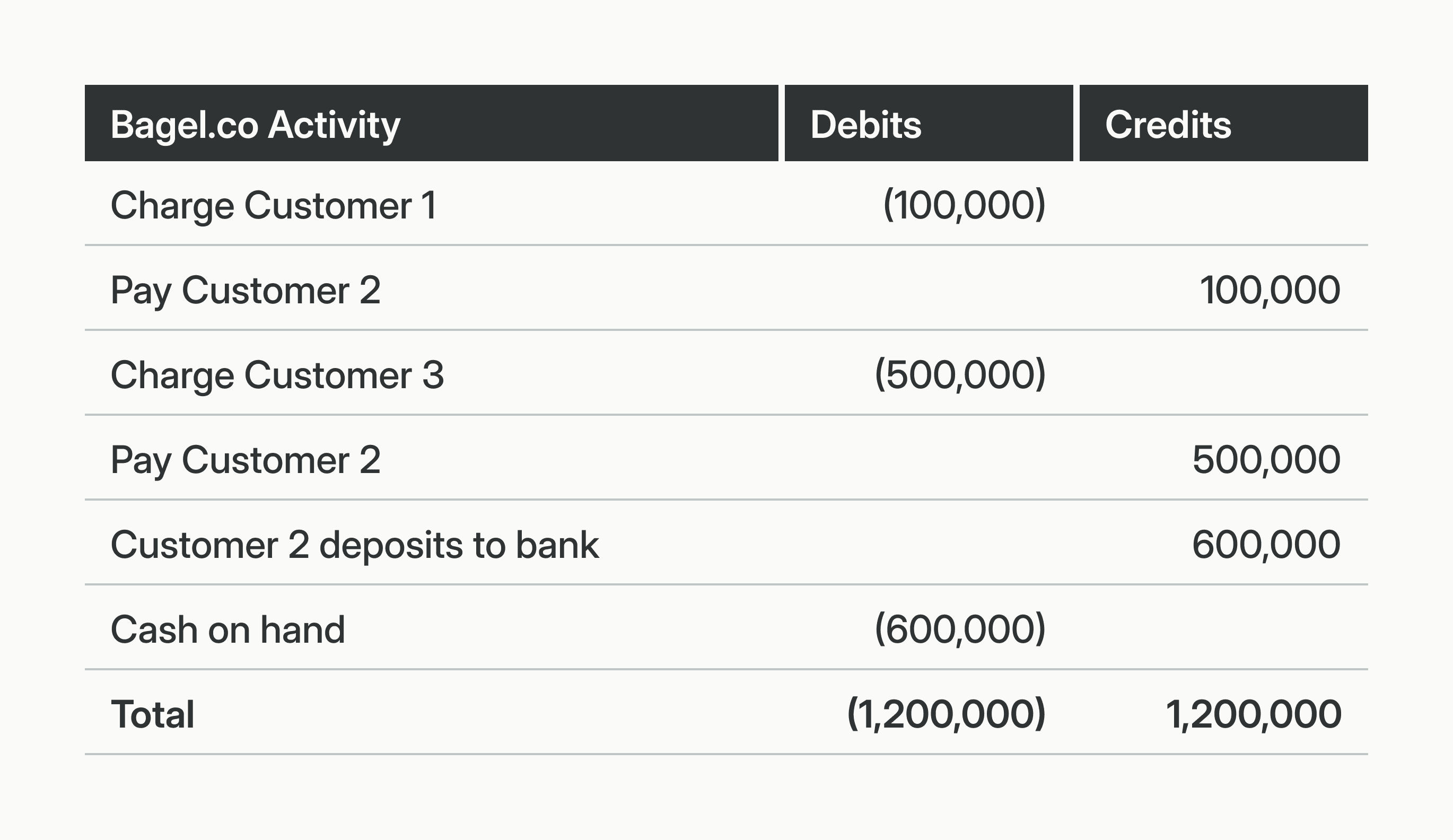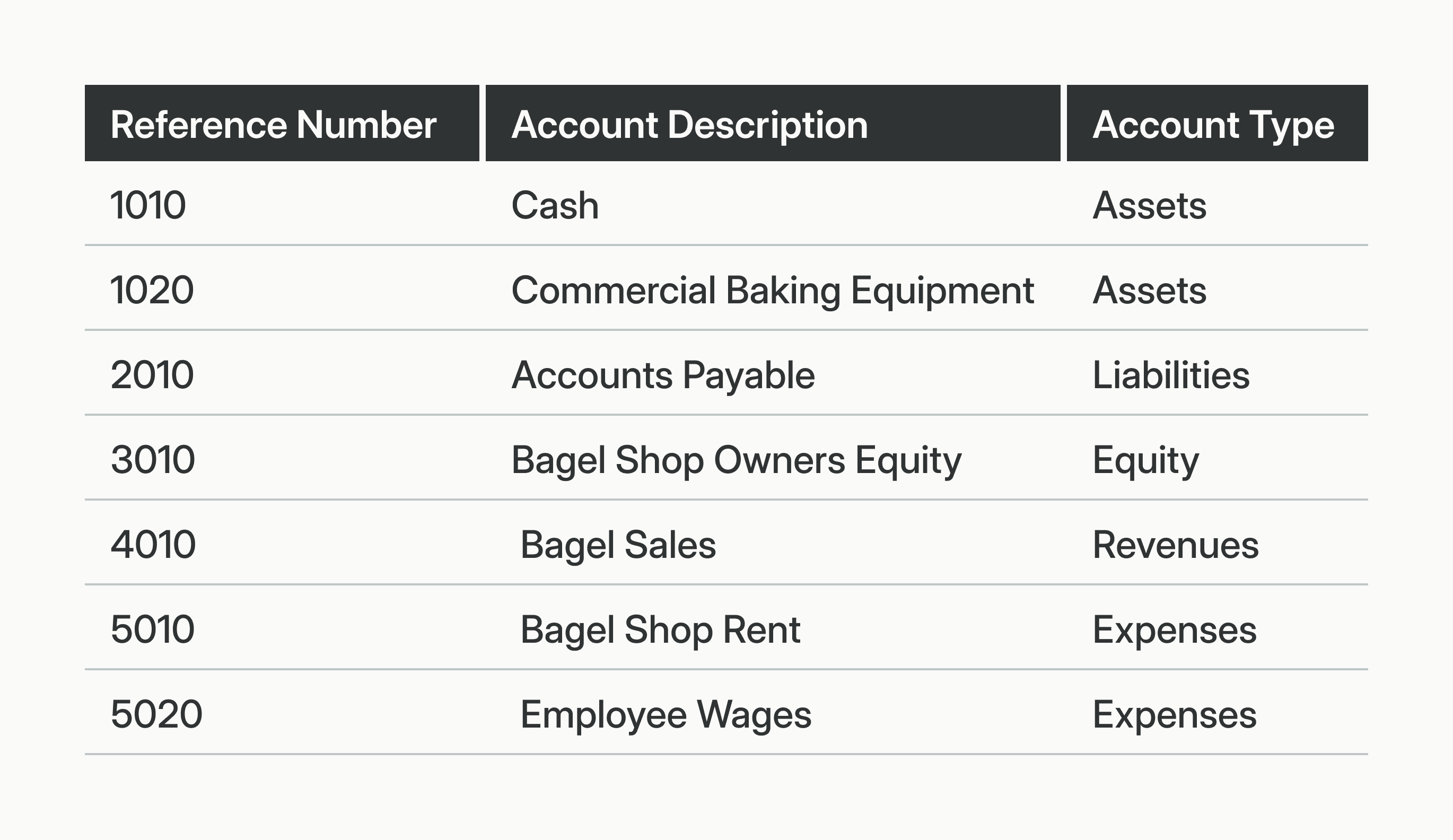Modern Treasury and Paxos Make It Easier for Businesses to Move Money with Stablecoins.Learn more →
A ledger is a record-keeping system for a company’s financial transaction data. A ledger is a central source of truth, between all financial data sources and destinations.
A ledger provides a record of each debit and credit transaction across the lifespan of a company. Each transaction within the ledger is also known as an “entry.”
Businesses use ledgers to get a detailed view of their financial transactions for different periods of time, be that weeks, months, quarters, or years. The information contained in a ledger is also what is used to create income statements, balance sheets, or other financial documents. Another key use of a ledger is to keep track of important balances that can inform business decisions such as how much to pay out to vendors or employees.
What are the key components of a Ledger?
Double-Entry Accounting
Double-entry accounting records each transaction twice, as corresponding debits and credits. Double-entry transactions, also known as “entries,” are posted in two columns: debits and credits. The total of all of the different debit and credit entries must balance out. This method tracks not just cash on hand, but also the value of all of a company’s assets.
As an example, let’s say you run Bagel.co, a company that allows users to buy, sell, and trade bagels. Bagel.co moves funds between accounts that they operate on behalf of their customers. Customers 1-3 buy and sell bagels to each other, and cash out the balances of their accounts on your platform to external banks. Below is an example double-entry ledger of their transactions.

The key to double-entry accounting can be remembered as Assets = Liabilities + Equities. Using a ledger and tallying both sides of it helps with accuracy, because credits and debits should cancel each other out.
Chart of Accounts
The credit and debit transactions in a ledger are segregated into different accounts for different business uses. Simply put an account is a 'bucket' of value–or the balances a company needs to track. For instance, a business probably wants to know how much it has made in revenue, or how much it has spent on wages, or how much it owes to suppliers. Each of these balances would have their own accounts.
A chart of accounts (COA) is an index of all those different accounts within a company’s ledger. It is essentially a tool that provides a breakdown of all the company’s financial transactions by category and dictates how the transactions should be entered in the ledger.
A COA typically includes a name, a short description, and an identification code for each different account. A company’s transactions are then recorded throughout the year by debiting and crediting against these accounts.
Let’s look at a sample COA for a bagel shop:

What is the difference between a Ledger Database and a Sub-Ledger?
The ledger database is the master chart of accounts where all business transactions are recorded. A sub-ledger, or subsidiary ledger, is a set of intermediary accounts linked to the general ledger that contain transaction information. There can be multiple sub-ledgers of a ledger database.
For larger companies, it may not be convenient to enter every single transaction in the ledger database because of the high volume of transactions. In that case, individual transactions are recorded in sub-ledgers and the totals are then transferred to an account within the ledger database.
Where a ledger shows a summary of the double-entry accounting at any given point in time, the sub-ledger records the details of the transactions shown in the ledger database. Additionally, a sub-ledger must balance in order to reflect the correct information regarding those transactions from the ledger database.
To learn more about Ledgers, check out these additional resources:
Learn
Ledgers are foundational to any company that moves money at scale. Explore the accounting fundamentals behind the ledgering process, the differences between application ledgers and general ledgers, and more.
A Ledger Database is a database that stores accounting data. More specifically, a ledger database can store the current and historical value of a company’s financial data.
Pessimistic locking and optimistic locking are types of concurrency controls designed to handle concurrent updates in a ledger system, helping prevent race conditions and maintain immutability in financial ledgers.
Learn the difference between Single-Entry Accounting and Double-Entry Accounting
Data immutability is the idea that information within a database cannot be deleted or changed. In immutable—or append-only—databases, data can only ever be added.
GAAP, or Generally Accepted Accounting Principles, is the US system for preparing financial statements. It lays out the rules for how companies measure, present, and disclose their financial performance. The goal is to make reports reliable and easy to compare across businesses.
ACID stands for Atomicity, Consistency, Isolation, and Durability—the four rules that keep database transactions running smoothly. Together, they ensure every transaction is reliable, predictable, accurate, and intact.
Every Account in a double-entry ledger is categorized as debit normal or credit normal. Debit-Normal Accounts represent uses of funds (assets, expenses); Credit-Normal Accounts represent sources of funds (liabilities, equity, revenue).
Balance caching means storing the latest known account balance outside the core ledger for faster reads.
In the context of software, concurrency control is the ability for different parts of a program or algorithm to complete simultaneously without conflict. Concurrency controls in a database ensure that simultaneous transactions will be parsed appropriately.
Cryptographic immutability is a powerful tool for securing data, which requires encryption methods on each transaction to guarantee immutability. It’s often used for blockchains and distributed ledger systems to mitigate fraud.
An API call is idempotent if it has the same result, regardless of how many times it is applied. Inadvertent duplicate API calls can cause unintended consequences for a business, idempotency helps provide protection against that.
Sharding means dividing your database into horizontal partitions, called shards, which can each store a subset of data. to reduce latency; this often happens when data scales. Within a ledger, sharding is used to split transactions or accounts so that each shard holds a portion of the total ledger.
A chart of accounts (COA) is an index of all the different accounts within a company’s ledger.
A digital wallet (also sometimes called an electronic wallet) is an application that securely stores digital payment information and password data for a user.
A ledger API allows companies who need to move money at scale quickly and easily access, track, audit, and unify all of their financial data in one place.
The ledger balance, also called the current balance, is the opening amount of money in any checking account every morning. The ledger balance should remain the same for the duration of the day.
A ledger (also called a general ledger, accounting ledger, or financial ledger) is a record-keeping system for a company’s financial transaction data.
A subsidiary ledger is used to keep track of the details for a specific control account within a company’s general ledger.